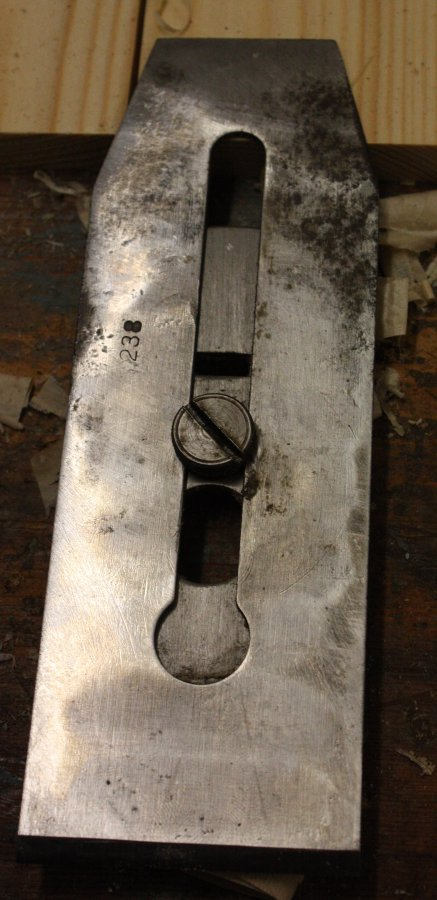Jacob
What goes around comes around.
Starting the new year with a bit of plane fiddling!
I had this very nice old #4 with a very sharp Jap "smoothcut" blade which cuts softwood beautifully but comes to a dead stop on anything hard such as this piece of sycamore. Digging in like a very loose blade, mysterious because obviously not loose on softwood

But the plane and everything seem dead solid and perfectly set
Looking at the blade can't help noticing little shiny marks

More clearly here

and here

The first marks obviously back of blade bearing on top edge of frog but the single scratch at the other end no obvious cause until looked closer

That bit of the frog casting is shiny too and the blade has obviously riding and rocking on these three points - the bit of casting and the two top edges of the frog. Not at all obvious when I just looked at the plane itself.

Easy fix with a file

Also noticed frog doesn't sit tight on the casting when the screws are loose, so added a primitive shim to tilt it forwards so the front feet are tight against the sole. Copper wire, could flatten it and glue it on

Done the trick! It now planes perfectly and starts to remove the great dig-ins of the first attempts.

The point of this being the diversity of things which can be wrong with a plane - difficult to spot and tending to be blamed on poor sharpening, fine adjustments, or other issues.
Happy New Year!
I had this very nice old #4 with a very sharp Jap "smoothcut" blade which cuts softwood beautifully but comes to a dead stop on anything hard such as this piece of sycamore. Digging in like a very loose blade, mysterious because obviously not loose on softwood

But the plane and everything seem dead solid and perfectly set
Looking at the blade can't help noticing little shiny marks

More clearly here

and here

The first marks obviously back of blade bearing on top edge of frog but the single scratch at the other end no obvious cause until looked closer

That bit of the frog casting is shiny too and the blade has obviously riding and rocking on these three points - the bit of casting and the two top edges of the frog. Not at all obvious when I just looked at the plane itself.

Easy fix with a file

Also noticed frog doesn't sit tight on the casting when the screws are loose, so added a primitive shim to tilt it forwards so the front feet are tight against the sole. Copper wire, could flatten it and glue it on

Done the trick! It now planes perfectly and starts to remove the great dig-ins of the first attempts.

The point of this being the diversity of things which can be wrong with a plane - difficult to spot and tending to be blamed on poor sharpening, fine adjustments, or other issues.
Happy New Year!
Last edited:






































